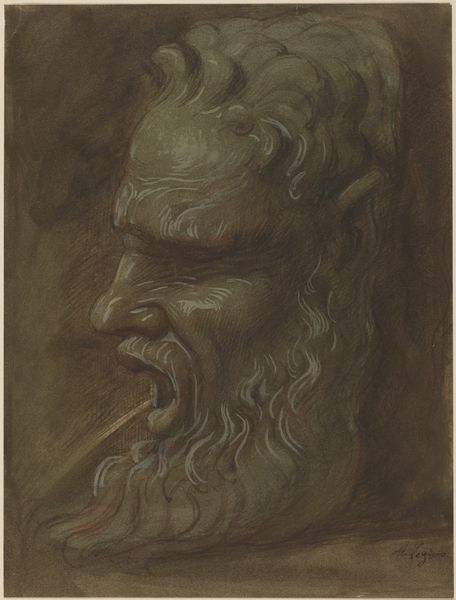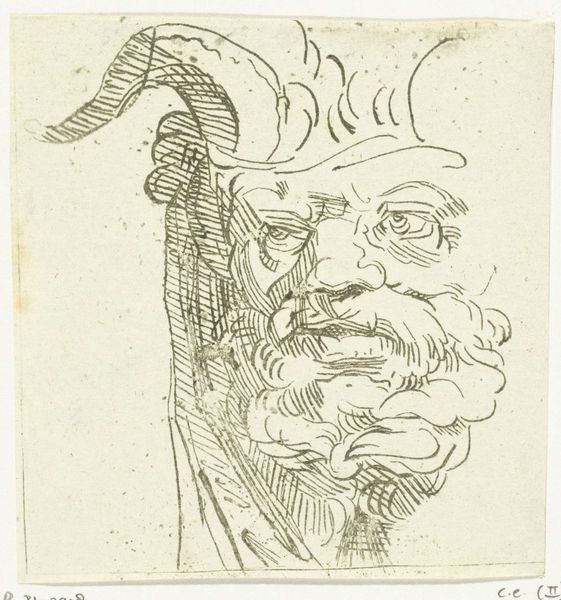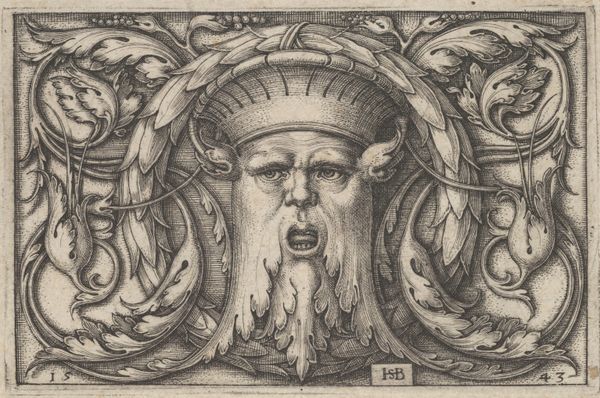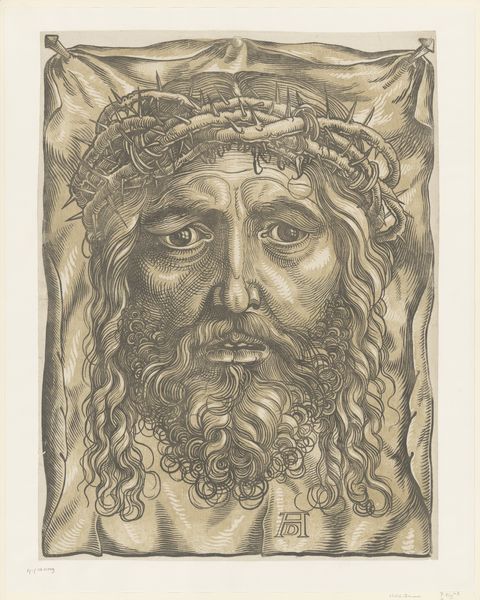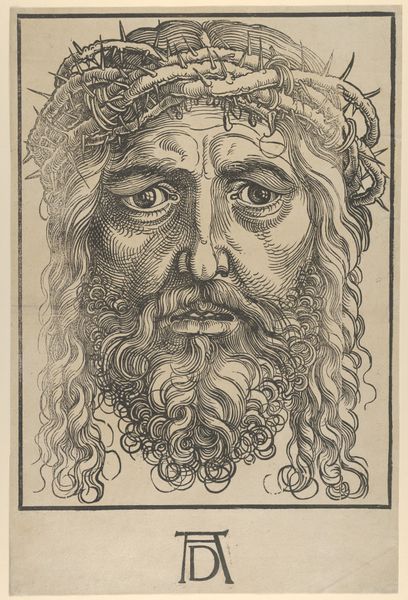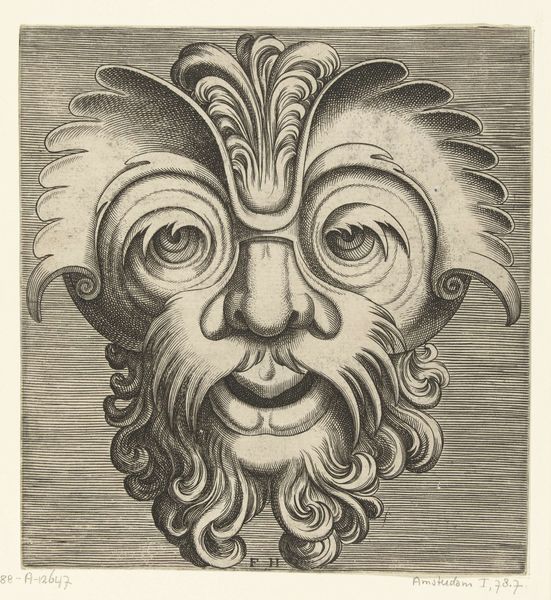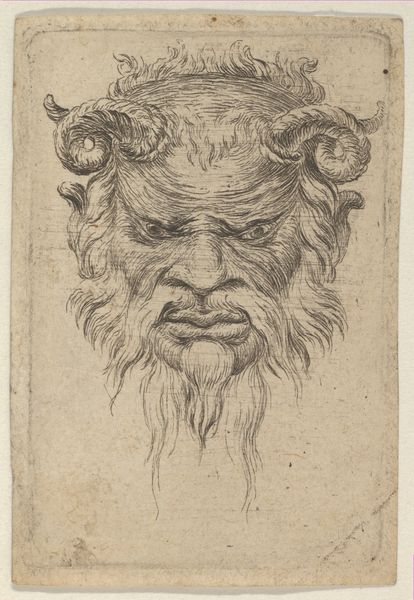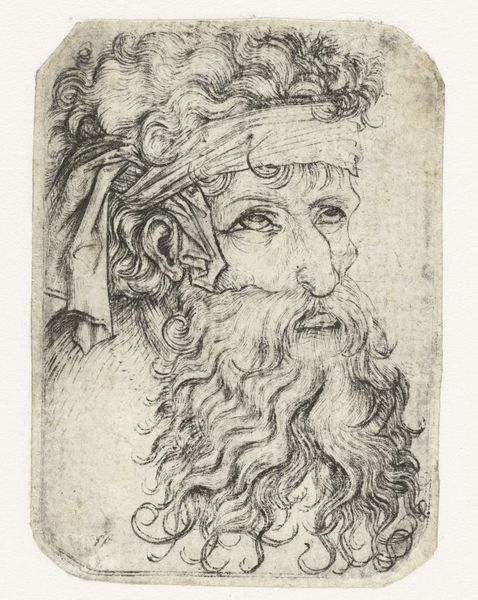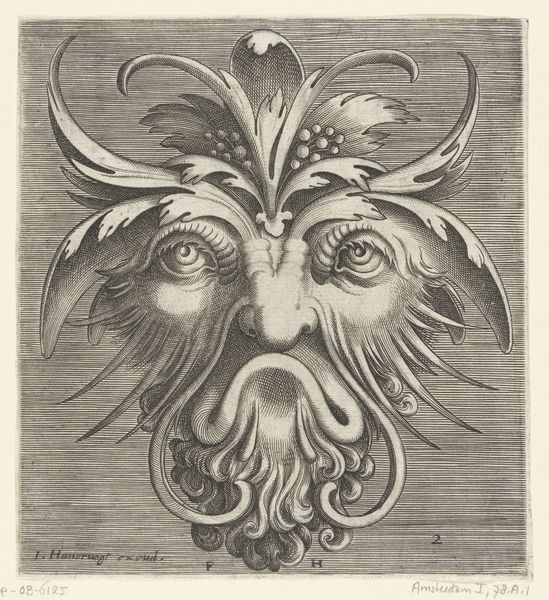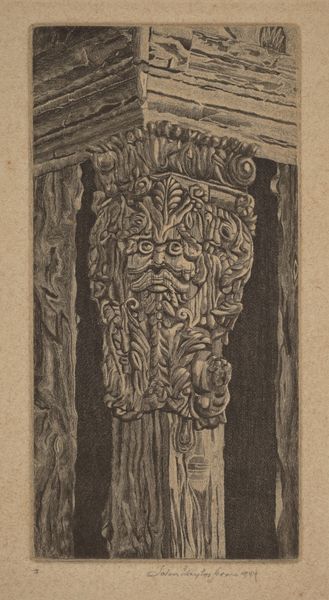
drawing, print, paper, ink, graphite, pen
#
portrait
#
drawing
# print
#
classical-realism
#
paper
#
ink
#
graphite
#
pen
Dimensions: 112 × 277 mm
Copyright: Public Domain
Curator: Here we have James Barry's "Head of Neptune," dating back to the 18th century. It's a drawing, utilizing pen, ink, and graphite on paper. Editor: It's… intensely baroque! The sheer volume of the hair and beard, the framing vegetation, and Neptune’s weary expression—it feels like a stage set ready to collapse. Curator: Indeed! It's fascinating to consider the labor involved in creating this print. The repetitive, delicate strokes with the pen to build up the density and texture of the hair. How was such a work of meticulous craftsmanship received, and who was its intended audience? Editor: Well, Neptune, or Poseidon in Greek mythology, is the god of the sea. Look at the details Barry includes – flowing hair merging seamlessly into crashing waves, the symbolic power associated with water is abundant here. Neptune embodies not just control over the ocean, but also elemental, often dangerous, natural forces. Curator: The contrast between Neptune’s dignified features and the wild abundance of water motifs, reflects larger issues of societal control during that time. Consider also, paper production in the 18th century was no simple process. This print wasn't disposable. Editor: But isn't there a subtle sadness in Neptune's eyes? A sense of loss, perhaps hinting at the diminishment of the classical world, superseded by new cultural narratives? Curator: A keen observation. That brings up issues around its value and marketability as art during this period. This artwork provides access to an understanding of resource allocation in creating artworks during the artist's life. Editor: I see now, this melancholic aspect. Looking again, the surrounding foliage is not particularly joyous and bright; it conveys more a mood of contemplation instead, a certain burden. The symbols surrounding him contribute to this mood. Curator: Precisely! Understanding the material and production context is key to understanding how classical ideals were reinterpreted during this period, especially given access to the same raw materials available to produce the same types of drawing. Editor: That's right, without those mythological clues, this "head" loses its context completely, a fate shared by so many cultural icons displaced across time. Curator: And it allows us to critically examine the artistic labor behind what we now classify as a work of classical realism. Editor: Indeed, it's a window into a past era, shaped as much by artistry as by symbolic currents that time has carried to us.
Comments
No comments
Be the first to comment and join the conversation on the ultimate creative platform.
